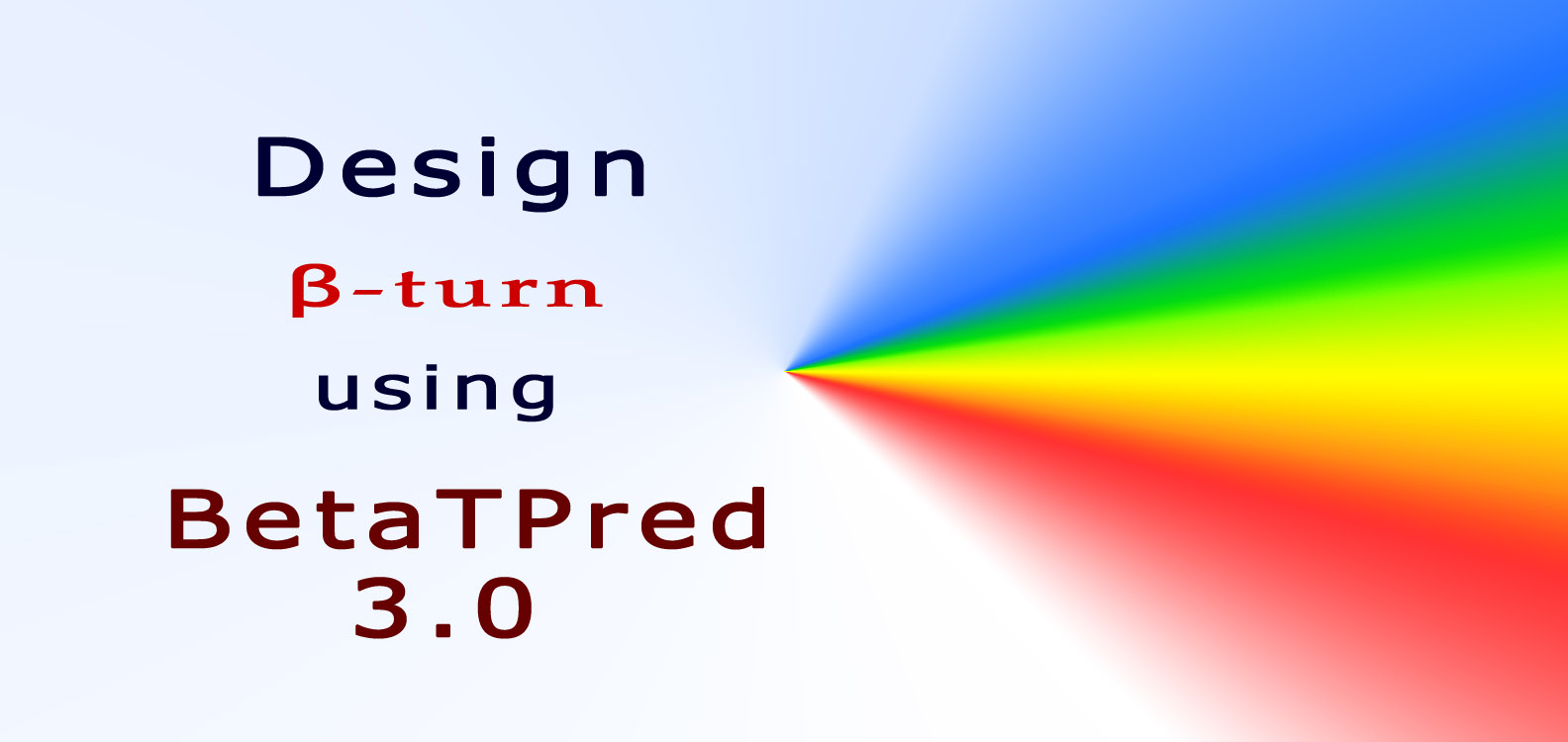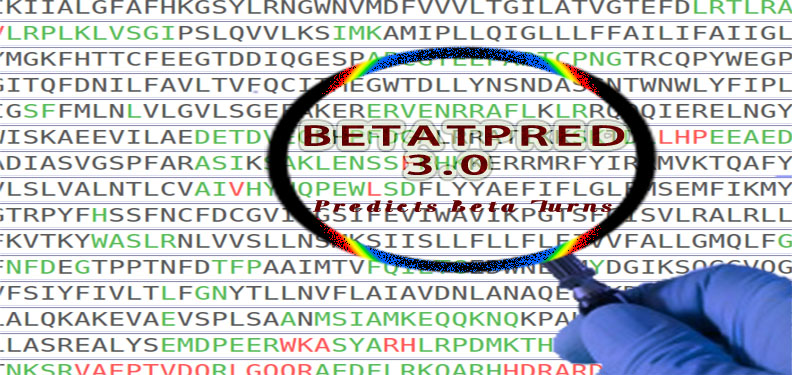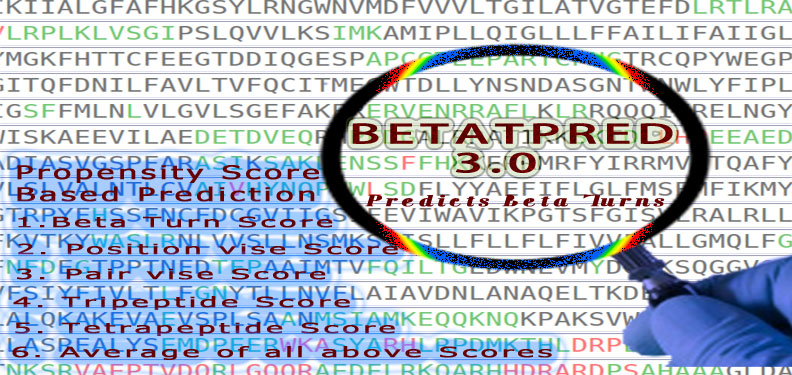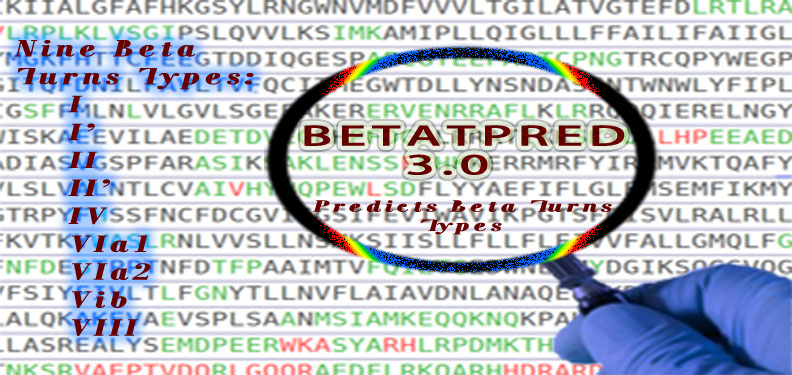Inducing or Breaking Beta Turns
In past large number of methods have been developed for predicting beta turns, none of existing method suitable for designing beta turns. This module of BetaTPred3 developed for inducing/breaking beta turns in a protein at desired position. It identify best mutation required for increasing or decreasing propensity of a beta turn. Click here to »Submit »

Beta Turn in proteins
Beta-turns are the most common type of non-repetitive structures, and constitute on average 25% of the residues in all protein chains. In a beta turn, a tight loop is formed when the carbonyl oxygen of one residue forms a hydrogen bond with the amide proton of an amino acid three residues down the chain. This hydrogen bond stabilizes the beta bend structure. A beta turn can reverse the direction of its peptide chain.
Prediction of Beta Turn
In the past numerous methods were developed to predict the beta turns. But all of this method were trained to predict residue level prediction instead of four residue level. Since, a beta turn is composed of four consecutive amno acids. Using this simple approach we have achieved good prediction accuracy and realistic prediction of beta turns. To predict beta turns in your protein click »Submit »
Propensity based Beta Turn prediction
In the past statistical methods were developed to predict the beta turns based upon propensity score of beta turn. The propensity score was calculated using few hundered PDBs. We have calculate new propensity score using ~18000 PDBs. Users can predict beta turns based upon various position based propensity score. Click here to »Submit »
Prediction of Beta Turn Type
In the past numerous methods were developed to predict the beta turn types. Using the turn level approach we have significantly improved the prediction accuracy of beta turn types. To predict beta turns types in your protein click »Submit »
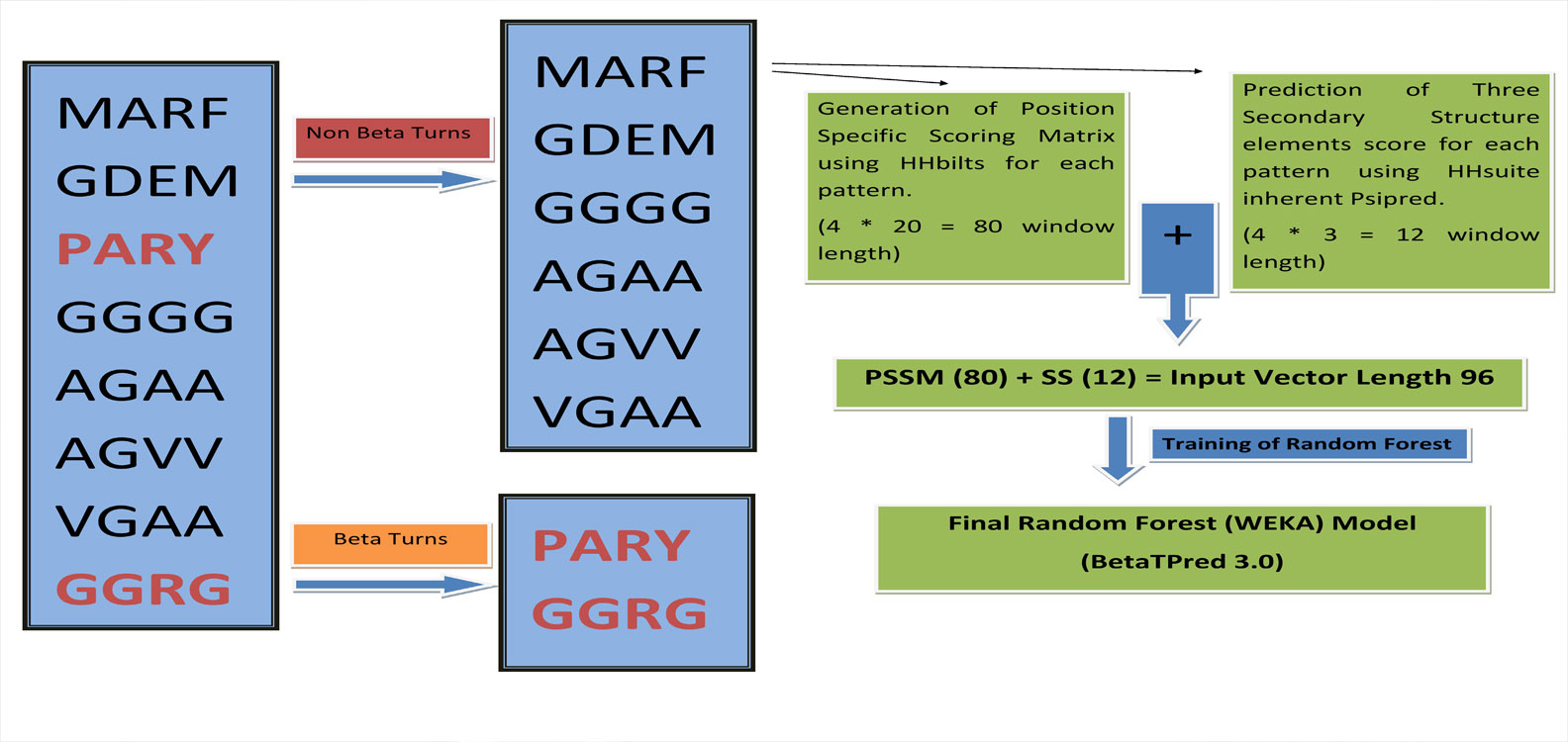
Algorithm
We have developed a algorithm that predcit complete beta turn, earlier algorithm predict the residue that are present in beta turn. They can predict a residue to be beta turn residue, even its neighbouring residue are non beta turn. Our algorithm has overcome all these limitation and can predict only four consecutive beta turn residues.
More »